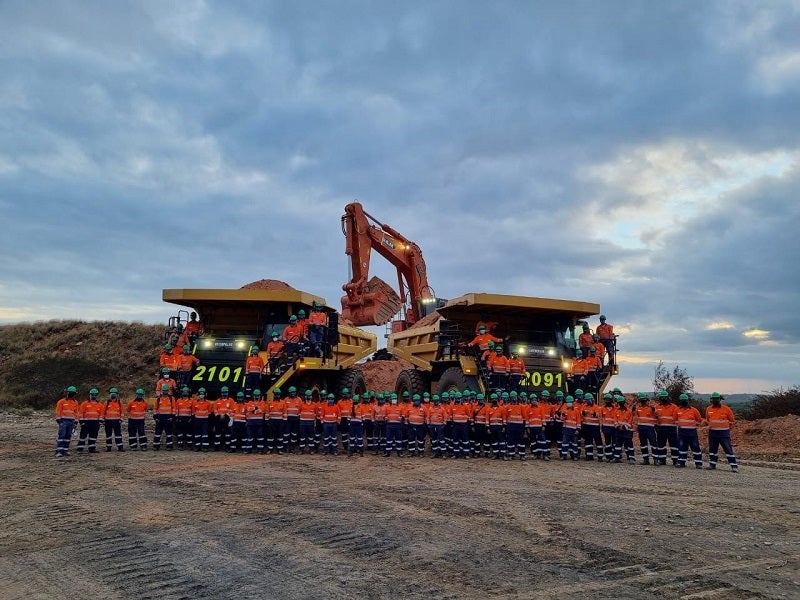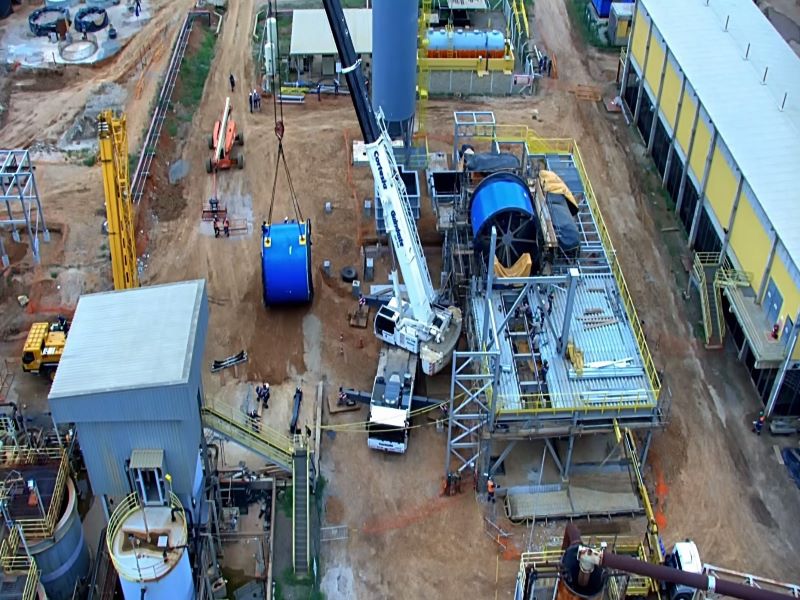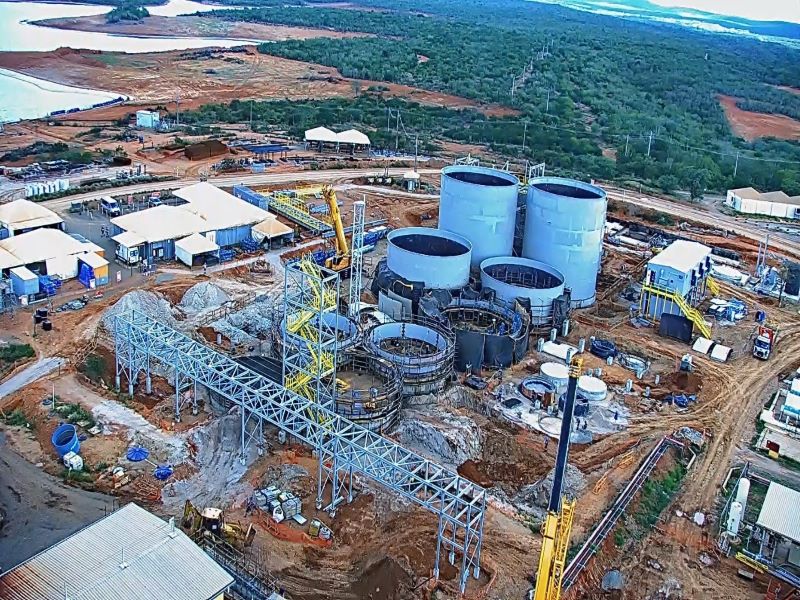The Santa Luz project is an open-pit gold mining operation in the state of Bahia, Brazil. It is owned and operated by Canadian mining company Equinox Gold.
The open-pit mine was operated by precious metals exploration and production company Yamana Gold from mid-2013 to mid-2014 and was placed on care and maintenance in September 2014 due to poor metallurgical recovery results. The ownership changed hands over the years before Equinox, the current operator, acquired the gold mine in March 2020.
Full-scale construction of the Santa Luz project was initiated by Equinox in November 2020. The project has an estimated initial pre-production capital investment of approximately $103m. It is a brownfield mine with the majority of the infrastructure already installed at the site. An updated feasibility study released in November 2020 envisages an estimated life of mine (LOM) of 9.5 years, including eight years of mining and 1.5 years of processing stockpiles.
Mining activities commenced in June 2021 with a focus on removing waste and developing infrastructure such as access roads, ramps, dumps and ore storage areas for a pre-stripping campaign before full-scale mining in late 2021. The project is expected to achieve its first gold pour in the first quarter (Q1) 2022.
Santa Luz project location and geology
The Santa Luz project is located approximately 35km north of the town of Santa Luz, Bahia, Brazil. The property is approximately 240km away from the city of Salvador in the Maria Preta mining district. It encompasses an area of approximately 48,599.25ha, including 36 exploration permits and six mining concessions.
The deposit is situated in the Rio Itapicurú Greenstone Belt (RIGB) on the north-eastern portion of the São Francisco Craton. Considered the largest greenstone belt in the craton, the RIGB extends approximately 100km in a north-south trend with widths ranging between 30km and 50km.
The host rocks at the Santa Luz project include sedimentary rocks, dioritic and dacitic intrusive rocks, and felsic to intermediate volcanic and tuffaceous rocks. The volcanic rocks and dioritic and dacitic intrusions are typically porphyritic, with fine‐ to medium‐grained quartz and feldspar phenocrysts.
Santa Luz mineralisation and reserves
The gold mineralisation at the Santa Luz project is associated with quartz-carbonate-sulphide veins and breccia filling hosted in sheared and hydrothermally altered rocks within a district-scale shear zone. The mineralised veins occur as two main types of quartz veins with white to grey foliation‐parallel type being the most common while the other is thicker and normally black or dark grey.
The proven and probable mineral reserves at the Santa Luz project were estimated at 24.9 million tonnes (Mt) grading 1.34g/t gold (Au) for 1.07 million ounces (Moz) in contained gold, as of November 2020.
Mining methods at Santa Luz gold mine
The Santa Luz mine will be operated as a truck and excavator open-pit mine that involves traditional open-pit mining methods of drilling, blasting, loading, and hauling. Mining operations will be executed from three pits, including C1 and two small pits at the Antas 3 deposit. The overall waste to ore stripping ratio for the operation is 4.3:1, which includes the 2.2Mt of stockpile, or 4.7:1, excluding the stockpiles.
The pit design features a minimum mining width of 20m with pit bench heights at 10m and mining proceeding in two 5m flitches with a safety berm every 10m to ensure safe loading and hauling. The ramp road grades are limited to a maximum of 10% with approximately 25m wide from toe to crest for the C1 and Antes 3 deposits.
The mining operations are based on an average and maximum mining rate of approximately 15.3 million tonnes per annum (Mtpa) and 22Mtpa respectively. The C1 deposit will have a life of mine (LOM) of nine years, while Antas 3 will have a LOM of six years.
Mineral processing
The run of mine (ROM) ore will undergo crushing in a primary jaw crusher followed by a cone crusher arranged in an open circuit. The crushed ore will be ground in a semi-autogenous (SAG) mill and a ball mill operating in series. The screen undersize will be pumped to the primary mill cyclones while the combined SAG mill cyclone overflow and the ball mill discharge will be transferred to the secondary mill cyclones.
The screen undersize will be fed into the gravity concentrators which will, in turn, feed the intensive leach reactor to produce a pregnant leach solution (PLS). The PLS will undergo leaching in a resin in leach (RIL) circuit to produce resin in the form of spherical beads approximately 1mm in diameter.
The loaded resin will be passed through a screen to separate the resin from the ore slurry. It will be washed and eluted in a closed circuit with four electrowinning cells. The eluted resin will be washed with a caustic solution to neutralise the remaining acid content before being recycled to the RIL tanks. In the electrowinning cells, gold and other metals in the eluate will be electrodeposited on the cathodes that are periodically washed. The cathode sludge will be collected, filtered, and dried.
Oxidisers and flux will be added to the dried cathode sludge and the resultant solution will be smelted to produce doré metal and slag. The metal produced at the end of the process will be an alloy of copper and gold, which will be shipped to a custom refinery, where the slag will be further processed for the recovery of coarse metal and recycling to the plant feed.
The gold project will also involve the processing of dacitic‐high‐sulphide ore mined from the Antas 3 deposit in the final year of operation. The ore will be floated in the flotation circuit while the concentrate will be filtered in a new filtering plant. The resultant filter cake will be stored for shipping off-site, either to copper smelters or other toll milling plants.
Infrastructure of Santa Luz project
The Santa Luz project area is accessible by road from Salvador via highway BR‐324 to Feira de Santana, BR‐116 to Serrinha, BA‐409 to Conceição do Coité, and then BA‐120 to Santa Luz. A municipal dirt road from Santa Luz links the project site.
The power supply required for the project is sourced from an existing power line connected to the Brazilian grid. The project is served by Companhia de Eletricidade do Estado da Bahia (COELBA), Bahia’s state power utility, under a contract that provides 0.5MW during peak hours and 10MW in non‐peak hours.
All raw water supply needs are met from the Rio Itapicurú and 14 groundwater wells. The project receives approximately 30m³ of potable water a week under a contract with Bahia’ state water utility Empresa Baiana de Águas e Saneamento (EMBASA).
Contractors involved in Santa Luz gold project
The mining contract for the project was awarded to mining services company U&M Mineração e Construção (U&M).
SLR Consulting subsidiary Roscoe Postle Associates (RPA) and Ausenco Engineering Canada were engaged to jointly prepare the technical report for the Santa Luz project. The technical report was published in November 2020.






